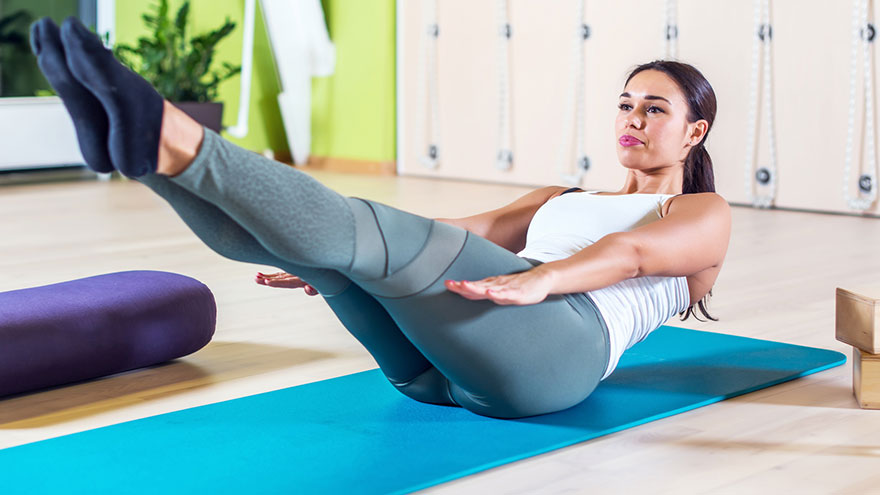Classical Pilates Exercise Names
The word “Pilates,” when placed in front of an exercise or fitness gizmo, draws attention. Whether the Pilates distinction constitutes truth in advertising is debatable. Some instructors teach an evolved Pilates method. It features newer exercises not invented by Joe Pilates, but adhering to his basic fitness principles. Others hold steadfast to the earliest techniques. Called Classical Pilates mat series and developed in the late 19th century, this approach maintains the names, sequencing and alignment methods of the original program. In latter years, after Pilates created his signature apparatus, he transformed the mat series to suit the equipment.

Powerhouse and Alignment
Pilates believed in engaging the powerhouse — what we now call our deep-core muscles — in every exercise. He had students do this by exhaling and drawing their belly buttons toward their spine in order to promote a deeper abdominal contraction while stabilizing the lower back. The position of the pelvis and lower back distinguishes classical from contemporary Pilates. Contemporary advocates believe that the lower back should maintain its small, natural curve, called the neutral spine. Classicists believe that the lower back must remain flat, or imprinted.
Mat Abdominal Exercises
Any Classical Pilates series begins with an abdominal exercise called “The Hundred.” Performed supine with your legs lifted and extended, your head and shoulders off the floor and your arms reaching by your sides, it involves pumping your arms up and down, breathing in for five counts and out for five counts, until you reach 100. The Roll Up, essentially a full, straight-legged sit-up, comes next, followed by the Roll Over, which peels your spine from the floor as you bring your legs overhead, as if in a yoga Plow position. The Teaser, an advanced exercise, begins supine, with legs straight and arms extended overhead. Your legs and upper body lift simultaneously, so that you balance on your tailbone.
Mat Obliques
Rotation and side-bending exercises for the internal and external obliques make up a significant portion of the Classical Pilates mat repertoire. The Saw, performed in a seated position with your legs slightly open, involves rotating your upper body and reaching your opposite hand to your opposite foot. To do the Side Bend, sit with your knees bent and your legs to the right. Place your left hand on the floor, next to your left hip. Lifting your hips from the floor, straighten your legs, reach your right hand toward your head and create a banana shape with your upper torso.
Legs and Butt
The Pilates Side Kick, performed either in a side-lying or kneeling position, targets your outer thighs, hamstrings and butt muscles. The movement requires you to keep one leg straight, stabilize your pelvis and rib cage and swing your leg back and forth in a controlled manner. Most of the prone Classical Pilates exercises work the hamstrings and glutes. Swimming, for example, uses a coordinated flutter kick of the legs and arms. Leg Pull Front is performed from a push-up or plank position and involves engaging your glute muscles to lift each leg into hip extension.
Upper Body
The Push-Up is the only significant upper body exercise in the Classical Pilates series. Joe, however, had a different approach to this iconic military exercise. cc position. Next, you bend forward at the waist, touch the floor and walk your hands forward to a plank position. Do one push-up, walk your hands back roll your spine back up and repeat the sequence.
You Might Also Like :: Can Walking Up Stairs Boost Metabolism?

